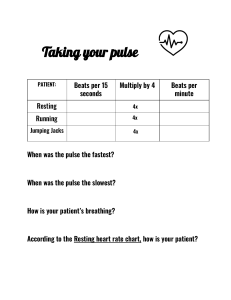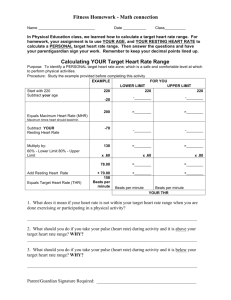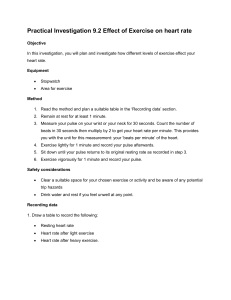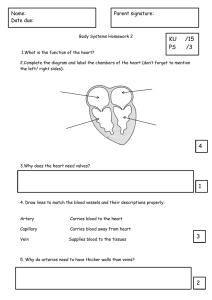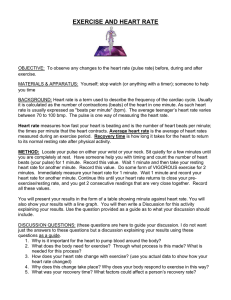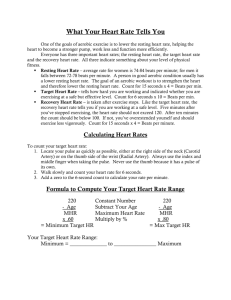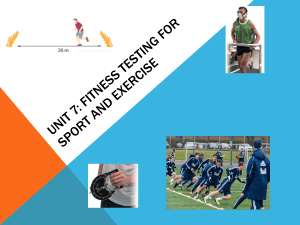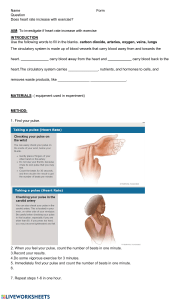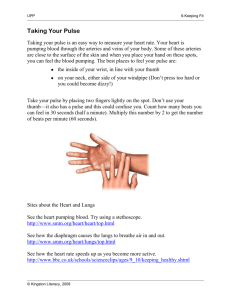SECTION 5: CIRCULATION INTRODUCTION
advertisement
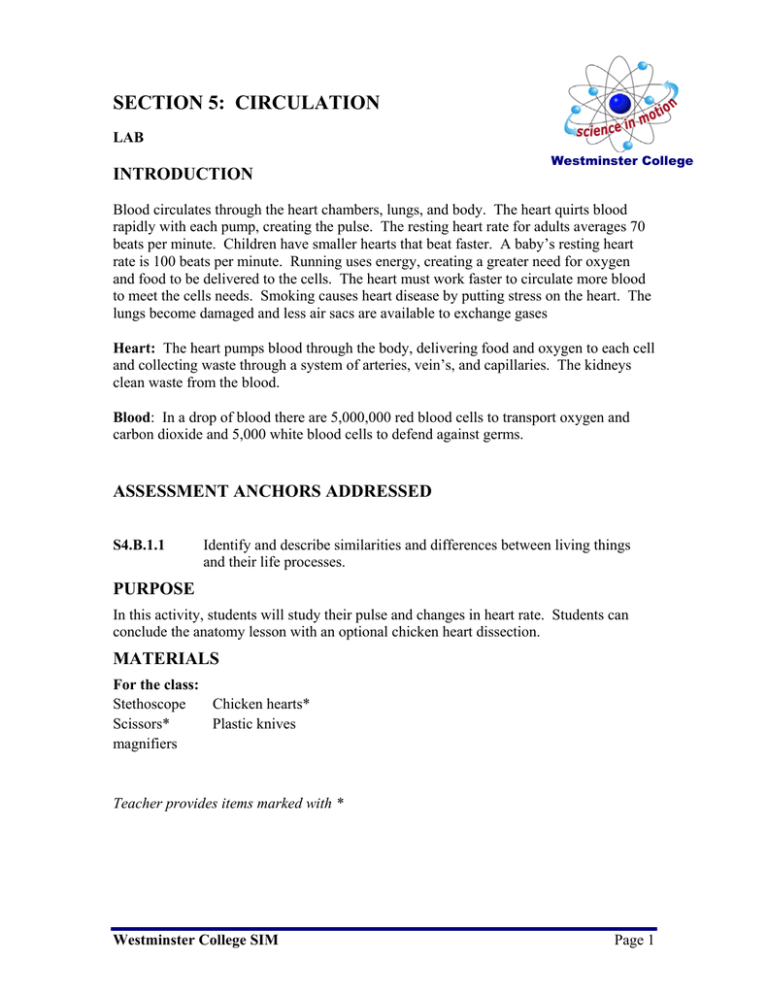
SECTION 5: CIRCULATION LAB INTRODUCTION Westminster College Blood circulates through the heart chambers, lungs, and body. The heart quirts blood rapidly with each pump, creating the pulse. The resting heart rate for adults averages 70 beats per minute. Children have smaller hearts that beat faster. A baby’s resting heart rate is 100 beats per minute. Running uses energy, creating a greater need for oxygen and food to be delivered to the cells. The heart must work faster to circulate more blood to meet the cells needs. Smoking causes heart disease by putting stress on the heart. The lungs become damaged and less air sacs are available to exchange gases Heart: The heart pumps blood through the body, delivering food and oxygen to each cell and collecting waste through a system of arteries, vein’s, and capillaries. The kidneys clean waste from the blood. Blood: In a drop of blood there are 5,000,000 red blood cells to transport oxygen and carbon dioxide and 5,000 white blood cells to defend against germs. ASSESSMENT ANCHORS ADDRESSED S4.B.1.1 Identify and describe similarities and differences between living things and their life processes. PURPOSE In this activity, students will study their pulse and changes in heart rate. Students can conclude the anatomy lesson with an optional chicken heart dissection. MATERIALS For the class: Stethoscope Chicken hearts* Scissors* Plastic knives magnifiers Teacher provides items marked with * Westminster College SIM Page 1
